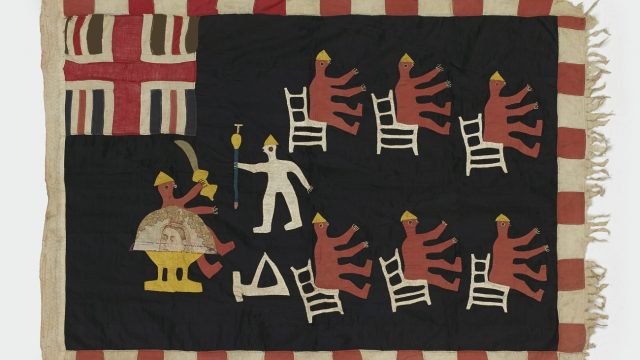Mannequins play a significant role in the staging of V&A fashion exhibitions. As the foundation onto which bespoke body padding and underpinnings can be applied, selecting the right mannequin is crucial to the presentation of a garment. For the V&A’s 2022 Africa Fashion exhibition the mannequin was especially important. It was considered an extension of the curatorial narrative, a means of enhancing the visibility of Africa and the visual culture of its fashion creatives. With a lack of diversity in commercially available mannequins, it was clear something new needed to be created that would embody the themes of the show and represent African and diaspora identities. The project team were unanimous, it would be non-sensical to use Eurocentric mannequins and a missed opportunity if the mannequin head was removed altogether.
There were many ways to approach the mannequin development and several methods were proposed. In recent years, the V&A’s Costume Mounting Team have had ongoing success utilising digital technology in the design and prototyping of new mannequins. With budget and timeframe in mind, digital sculpting was once again deemed the most effective way to create a new figure, however several questions arose that required careful consideration. In particular, how could one mannequin represent a continent as richly diverse as Africa?
Early consultation was carried out with the V&A’s internal Global Narratives Network (GNN) and with the Africa Fashion Co-design Group of 16 to 24 years-olds. Kenyan based Creative Director Sunny Dolat, a consultant researcher on the exhibition, also provided invaluable input throughout. Points of discussion included body shape, facial features, and the politics of hair and skin tone. It was agreed that the mannequin needed to be distinct and immediately recognisable as African, emulating the beauty of contemporary fashion models. To do this, a new female head would be created that could fit on multiple bodies, allowing for different sized mannequins and poses to be included. To create further variation within the figures, four colours indicative of skin tone and three hairstyles would complete the mannequin aesthetic.
Creating the head
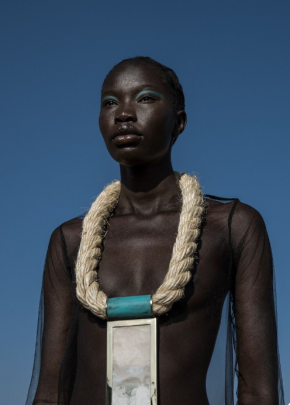
The multiplicity of the African continent, with all its forms of beauty, meant there were many sources of inspiration to draw from. However, to begin the process of creating a new head a single point of reference was needed. We wanted the design process to be transparent and to collaborate with an individual who could be named as the muse behind the Africa Fashion mannequin. With advice from Sunny, the model Adhel Bol was invited to join the project. Adhel’s distinct South Sudanese features were the epitome of African beauty and reflected the uprising of African models in the global fashion scene.
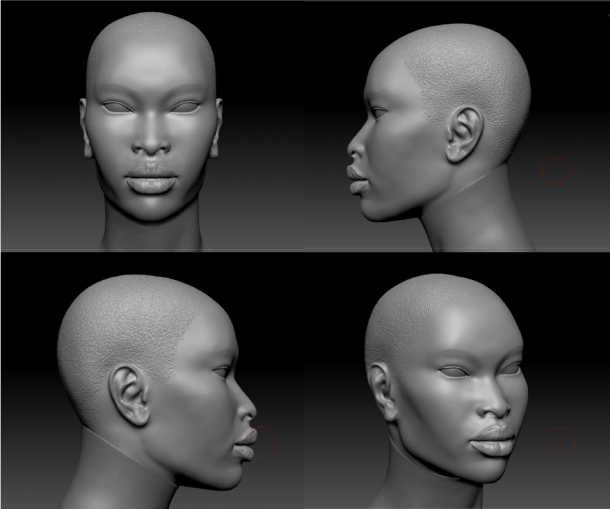
Up-to-date headshots were provided by Adhel and shared with the London based mannequin company Universal Display. The head was sculpted from a digital mesh clay into a detailed render that captured Adhel’s likeness. As the head was not intended to be hyper-realistic it was then ‘blown-back’, a process that softens the overall form but highlights key features such as the shape of the eyes and lips. As the process was carried out remotely and without exact dimensions, prototypes were 3D printed to ensure the correct scale and sculpted aesthetic was achieved.
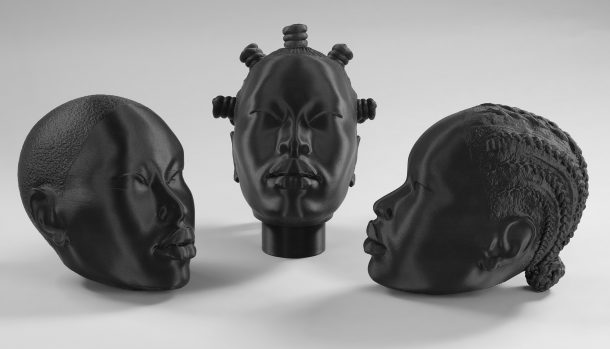
Once the head was refined and to size, the next stage was to add different hairstyles. The history and significance of Afro textured hair and how this could be realised through a fibreglass mannequin was carefully considered. Fibreglass has a hard, smooth surface which does not typically lend itself to tightly coiled textures. Traditional straight-back braids know as Irun Didi and Bantu knots could be achieved in fibreglass by utilising an array of digital sculpting tools. The final effect is a subtle level of realism that details the way the hair is parted and the direction of twists and plaits. A textured close crop was also created to include three different looks.
Colour
Whilst development of the head was ongoing, research into the paint finish was underway. Initial research led us to the work of photographer Angélica Dass whose portraits match people’s skin tone with shades on the pantone colour chart. We decided to trial something similar and colour match reference images to an array of paint colours, sprayed up in small samples on mannequins. This wasn’t straight forward as the colours in flat imagery didn’t translate exactly onto a three-dimensional surface and multiple colours had to be trialled. The paint finish was intended to represent a range of skin tones from across the Continent, but it also needed to work within an exhibition setting, and importantly against the garments on display. All of these factors were considered, and a survey was carried out with GNN members who were invited to vote on the final selection of colours and the proportion of tones represented in the exhibition.
Conclusion
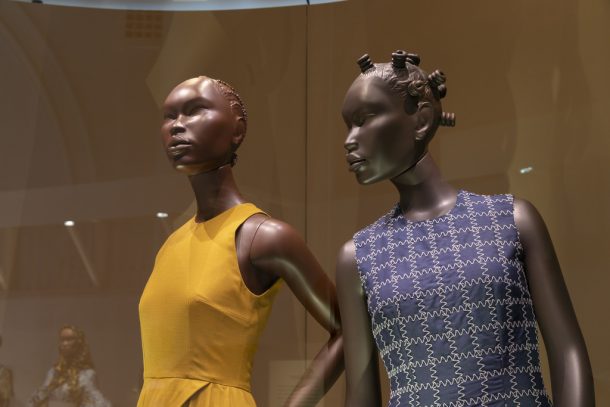
The staging of this ground-breaking exhibition was an opportunity to start creating mannequins representative of the global majority, with the purpose of centring and celebrating African fashions. The development of a new head to create a full-figure mannequin added an aesthetic dimension that emphasised the themes of the show, from Pan-Africanism to self-representation. The mannequins, in combination with in-house costume mounting methods helped to elevate the ensembles on display and encapsulate the contemporary moment. Not all black and African aesthetics could be embodied through one mannequin or represent the diversity of 54 countries. However, the inclusion of different hairstyles and paint colours created a subtle variation between figures, whilst a wider cross-section of African identities were represented through photography and film.
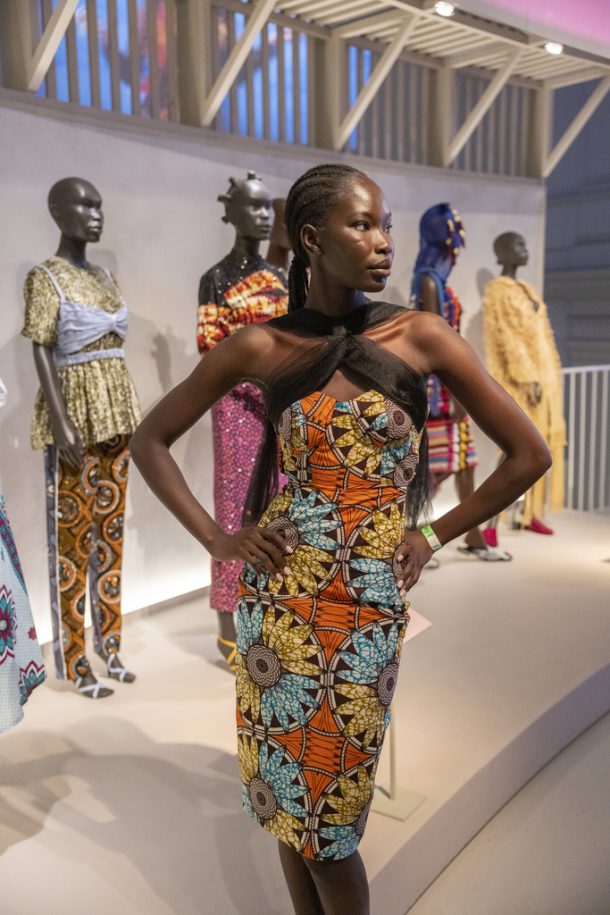
The current capabilities of digital design means there’s potential to create an abundance of mannequins that foreground the diversity of the Museum’s collections and audiences. The onus is on the Museum to continue to find authentic and imaginative ways to display fashion. The importance of this work is best expressed in the words of Adhel herself, after visiting the exhibition and seeing the mannequins that she had inspired:
“I had never seen a brown or black mannequin in my life, talk less of a mannequin with African hairstyles, braids, Bantu notes and our Africa features highlighted so well – full lips, high cheekbones, wide nose….to see myself brought to life in this way I am hoping it can inspire one or two young black boys and girls to feel represented, included in the conversation, in a room, the global fashion scene or any other major (sector) in life”
Adhel Bol Nov 2022


